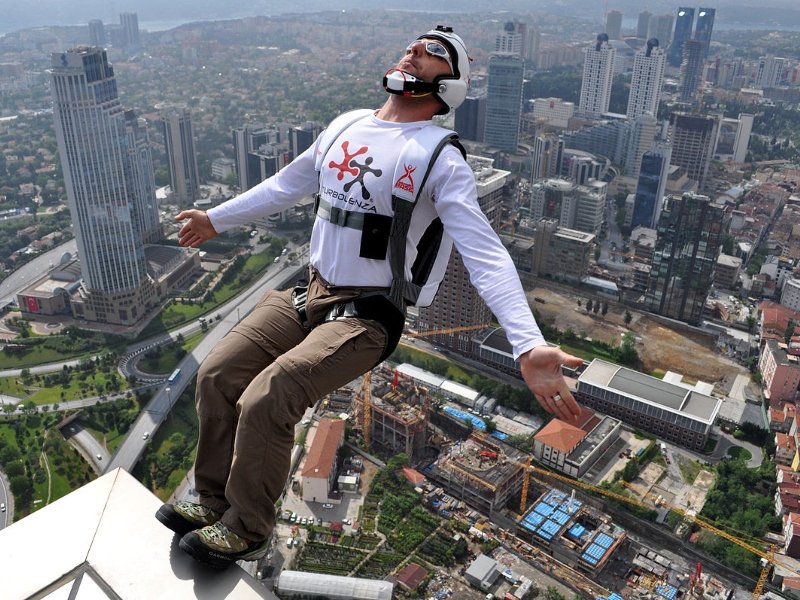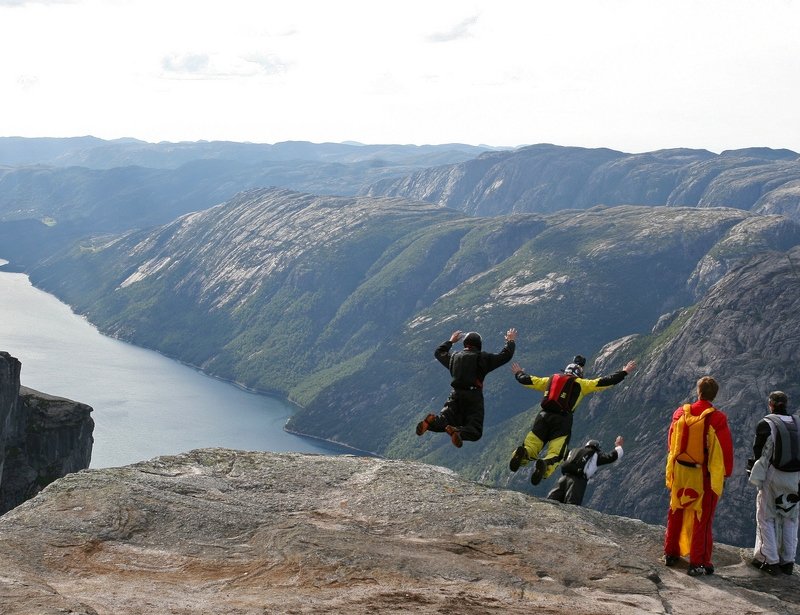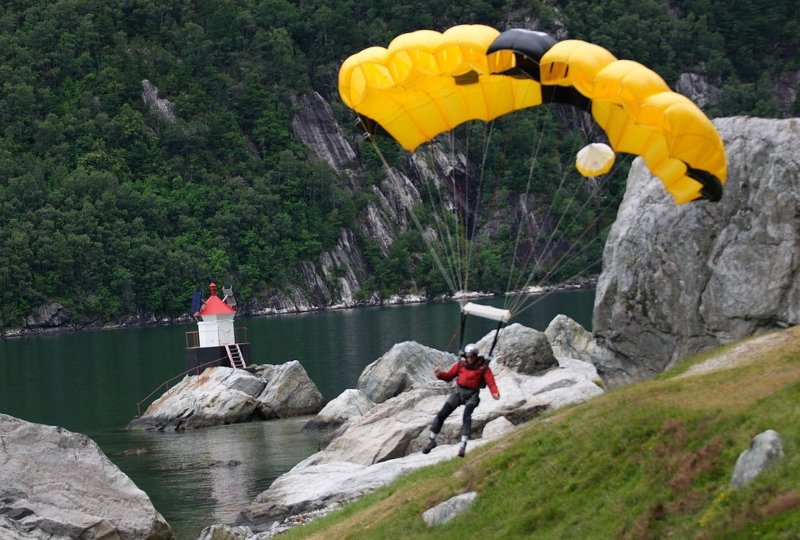Before getting into base jumping, it’s vital to understand the costs involved. From taking your beginner’s skydiving course to solo base jumping off the Perrine Bridge, you are going to incur a lot of fees and expenses. So just how much does base jumping cost?
If you are preparing to learn base jumping, you will already be an experienced skydiver and have invested some serious money into the sport (your spending will only continue as you get into base jumping). However, if you are new to the sport, it’s essential to be aware of the financial commitment you need to make to become a base jumper.
Let’s look at the costs involved, from learning to base jump to building your own equipment set up and regularly jumping. We can also look at cost-saving options such as second-hand gear.
How much does it cost to learn base jumping?

Before you even consider taking a beginner’s base jumping course, you’ll need to be a highly competent skydiver. That all starts with a beginner’s skydiving course and achieving your A skydiving license. Such courses cost anything from $3,000 to $5,000. But having your USPA A license only certifies you as a newbie skydiver; you still have a long way to go before reaching a level that will allow you to learn base jumping. In fact, you’ll need another 175 or so jumps, spanning at least 18 months. In that time, you will also want to start building your own skydiving equipment.
A parachute container can easily set you back another $3,000 to $5,000+, with a decent parachute costing over $2,000. Then you’ll need a reserve chute which will be $1,500+, and an ADD which will likely cost over $1,000. You’ll also need a jumpsuit and helmet, which can be $800+. OK, this is considering you buy everything new, but even on a budget and building decent second-hand equipment, you would be looking to spend around $6,000+. And on top of that, you need to pay for all your jump tickets, transportation, and USPA membership, so that’s another $1,000.
By the time you are ready to start your first base jumping course, you will have already invested over $10,000 (possibly double that). And while a good base jumping course will set you back around $1,500, very little of your skydiving equipment will be helpful. As your obsession for base jumping grows, you’ll need to start buying a whole new set of equipment.
How much does base jumping equipment cost?

Base jumping uses a different container and canopy setup to skydiving. While your skydiving rig will include a main parachute, pilot chute, and a reserved, as well as a somewhat complicated system of harnesses and handles, your base jumping setup will be much simpler and basic (but also safer for the job at hand). You’ll have a single canopy for base jumping, with no reserve or backup in place.
Your basic setup
The most popular and safest base jumping canopy is a vented parachute, which allows it to open much faster and more reliably at low altitudes and lower speeds. This single canopy will cost around $2,500.
You’ll need a new container for your canopy. Base jumping containers are also fairly basic in design, created to hold and launch a single parachute but with great speed and reliability. A good velcro-closed or single/double pin container will cost close to $1,000.
Some containers can have built-in risers, although we recommend using a three-ring riser which will cost around $150. While it’s rare that you’ll ever need to use a riser, having an independent riser adds more safety. You’ll also need to purchase some bridles. Base jumping uses much longer bridles than skydiving (usually around 9 feet long) due to lower airspeeds on a typical base jump. Bridles cost approximately $40.
Safety gear

Then you’ll want to upgrade your helmet and body armor. You may already have a decent skydiving helmet and body armor, and it’s possible to use this on your base jumping adventure, but we’d recommend getting base jump specific gear. You are at a much greater risk of severe impacts with base jumping, so having the most robust options makes sense. Expect to spend over $500 to $1,000 on a good helmet and body armor setup. You’ll also want a light and rugged gear bag which can keep all your new equipment organized and safe when having to trek through testing terrain. Add another $100 to $150 for a good gear bag.
Should you buy second-hand equipment?
Considering you may have spent $5,000+ on skydiving gear and then facing a similar bill for new base jumping equipment, it’s worth looking into getting second-hand gear. Two important things to realize are that skydiving and base jumping equipment are of exceptionally high standards, and most skydivers and jumpers take meticulous care of their equipment. So buying pre-used (and pre-loved) rigs and pieces of equipment doesn’t usually mean compromising quality. It could be argued that it is better to purchase top-of-the-range second-hand equipment than buy cheap new equipment. The only issues come with size and fit. When buying second-hand, you will probably find fewer choice and sizing options, so you sometimes need to get lucky and be able to ‘try before you buy.’
Perhaps the best compromise is to purchase your helmet, jumpsuit, and body armor new, getting to try on and find the exact fit and comfort you need. And look to find your highest-cost pieces of equipment, such as your canopy and container, on the second-hand marketplace.
Is base jumping expensive?

The fact you will have spent $10,000+ by the time you begin base jumping means you have already made a significant financial commitment to the sport. There is also a false myth that base jumping is a much cheaper sport, but sadly that isn’t the case. Base jumping is similarly expensive. In fact, many great base jumping spots are spread far and wide around the world, and many base jumpers will spend a considerable amount on travel to reach those iconic jump spots. While there are some iconic skydiving spots worldwide, you rarely have to travel far or spend too much to skydive. With base jumping, it’s not unusual to pay $3,000+ to travel to some of the more exotic base jumping locations worldwide and only make ten or so jumps.
How much you spend depends on how far you go with the sport. You could take a base jumping beginner’s course and decide it’s not for you or that base jumping will be a rarity. In that case, you can rent equipment as you go and limit and manage your expenses. But suppose you do become obsessed with the sport and make the significant financial commitment needed. In that case, most base jumpers will agree that the rewards and experiences far outweigh the costs.

